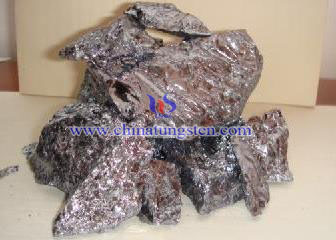High Molybdenum Scheelite Concentrate Prepares Ammonium Paratungstate
- Details
- Category: Tungsten Information
- Published on Thursday, 17 March 2016 16:31
- Written by Cristina
- Hits: 275
Over 70% ammonium paratungstate in China is produced by tungsten concentrate. Due to the consuming of tungsten concentrate over the past 50 years, tungsten resource structure has already changed:
1.Tungsten scheelite takes 73% of the existing tungsten resource.
2.Selective process is turning harder. For example, selecting of tungsten concentrate in Shizhuyuan which the WO3 grade is 45%, recovery rate reaches 80%. When WO3 grade is 65%, recovery rate is only 67%.
3.High impurity content. It is reported that tungsten mine reserve in Shizhuyuan reaches 25% in whole national industry reservation, the produced tungsten concentrate among which Mo/WO3>1.5%, more than 25 times of standard concentrate. Apart from this, impurities contents like As,P,Si,Sn are increasing.

Tungsten concentrate resource would run out in 10~15 years. In order to keep the sustainable development of tungsten industry, tungsten scheelite dealing method should be adopted gradually to replace tungsten concentrate. In the past, acid decomposition method is mainly used for dealing with tungsten scheelite, but it is insufficient in environment protection, product quality and recovery rate. Adopting NaOH decomposition method and selective precipitation method can leach WO3 from tungsten mine effectively. A large part of impurities would stay in the waste residue. Then combine traditional ion exchange method, removing impurities from tungstate which successfully solve the high molybdenum content, high impurities and calcium content in high molybdenum scheelite concentrate in the producing process.
The main steps: Firstly decompose tungsten mine material by NaOH, WO3 enters solution by means of Na2WO4. Impurities like P、Si、As are kept in the residue. These impurities are eliminated in Na2WO4 solution by ion exchange method. After it turns into (NH4)2WO4, precipitation agent M115 can be used to eliminate Mo and Sn. Then high purity APT can be obtained by evaporation crystallization. Molybdenum and precipitation agent can be recycled from molybdenum residue.
There is great economy and social efficiency by recycling molybdenum and precipitation agent from residue, especially when dealing with high molybdenum material. For instance, when dealing with tungsten scheelite in Shizhuyuan, 50~60tons of molybdenum can be recycled when producing 1,000tons of APT. The present recovery method is by leaching, let molybdenum into solution and keep precipitation in the residue which can keep the two things apart. Then molybdenum can be recycled from solution. Precipitation in residue can be sold as industrial raw material. Thus this method can lower the manufacturing cost, among which recycle and reuse of molybdenum is by no means a great fortune.
| Tungsten Supplier: Chinatungsten Online www.chinatungsten.com | Tel.: 86 592 5129696; Fax: 86 592 5129797;Email:sales@chinatungsten.com |
| Tungsten News & Prices, 3G Version: http://3g.chinatungsten.com | Molybdenum News & Molybdenum Price: http://news.molybdenum.com.cn |





 sales@chinatungsten.com
sales@chinatungsten.com